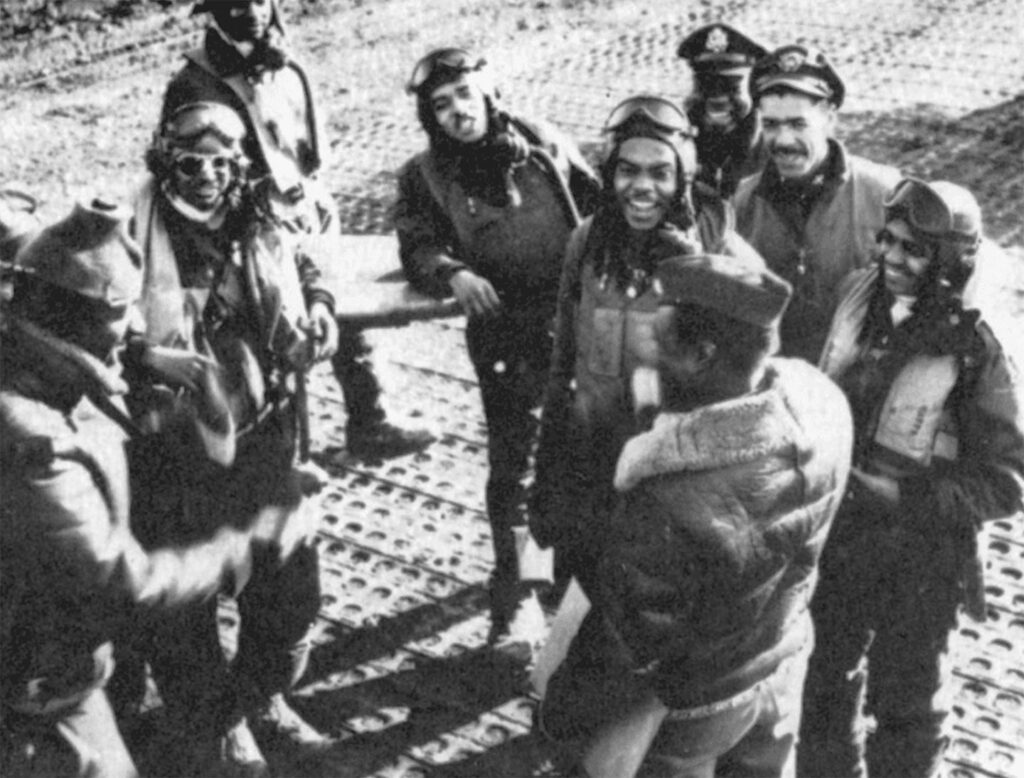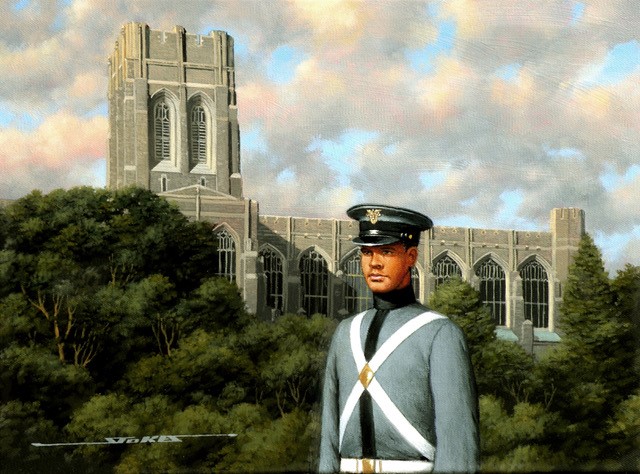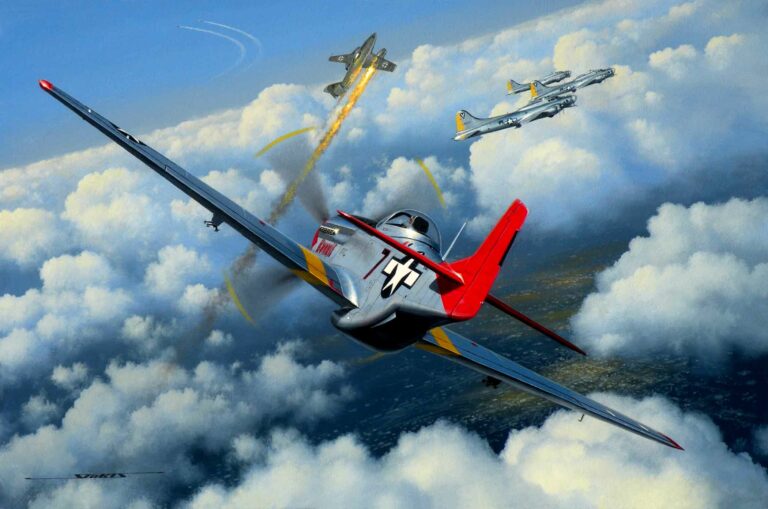In 1996, days before the Palm Springs Air Museum was to open its doors to the public, Bob Williams came to the museum introducing himself as one of the Tuskegee Airmen. He had a grand idea for a mural that would honor the achievements of the Tuskegee Airmen. A couple of days later, I came to meet with him at his house in Pasadena to discuss his ideas in detail. What came out of these talks would eventually be my huge Tuskegee Airmen mural that is at the Palm Springs Air Museum.
Born in Ottumwa, Iowa, Robert “Bob” Williams was a Tuskegee Airman and pioneer Aviator who spearheaded a movie project about them. Robert’s father was a pilot and he encouraged his two sons to learn to fly. Eventually, they became three of only 102 black pilots in the United States at that time. When the Japanese attacked Pearl Harbor in December 1941, Bob tried to join the Army Air Corps, but was at first denied enlistment due to the color of his skin. Eventually, in 1943, he was allowed to join and he received his training at Tuskegee, Alabama, a segregated facility that trained black pilots.
During WWII, Williams was a member of the 100th Squadron of the 332nd Fighter Group, and flew missions over Italy, Germany and Czechoslovakia. On March 31, 1945, in wide-ranging aerial combat, he destroyed two Luftwaffe FW-190’s and damaging another. He was awarded the Distinguished Flying Cross, the Air Medal with six oak leaf clusters, and the Presidential Distinguished Unit Citation, among others.
In 1952, Bob wrote a story of his experiences as a fighter pilot. He persevered over the next 43 years to get his story told. In 1995, the HBO movie, “THE TUSKEGEE AIRMEN” aired, educating a nation to the accomplishments of these American heroes. The film detailed how the “Fighting 99th”–the first squadron of black combat fighter pilots and the vanguard of nearly 1,000 black fliers–overcame racism for the right to serve their country, and emerged from the war wreathed with honor, but with little public acclaim. The film earned three Emmy Awards, a Peabody, a Cable Ace Award and two NAACP Image Awards.





